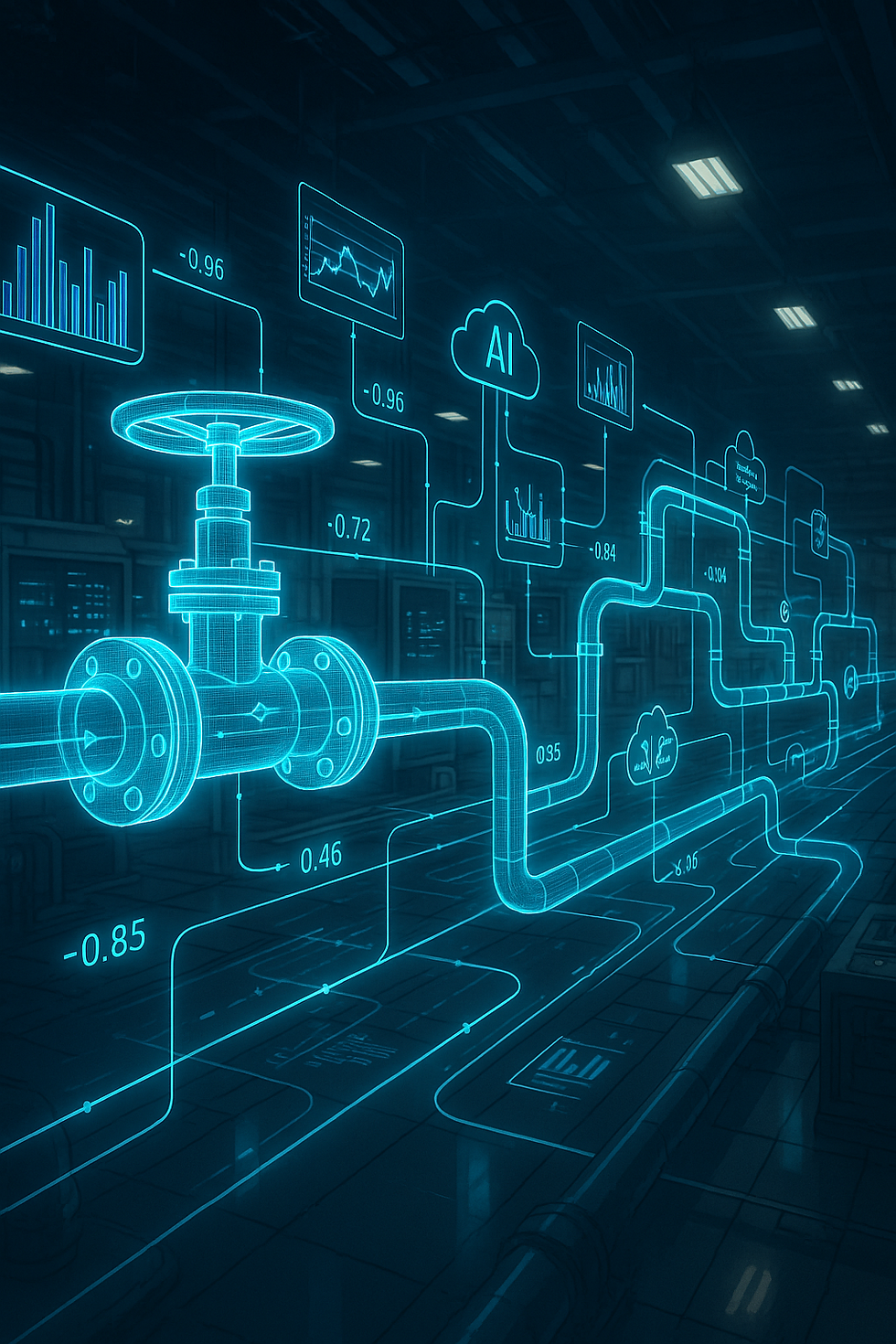Automation in Valves & Flow Control: How Industry 4.0 Is Changing the Game
- marketing96225
- Aug 15
- 3 min read

The New Era of Valve Technology
In the PVF (Piping, Valves, and Fittings) industry, valve technology is undergoing a rapid transformation. Industry 4.0 — the integration of automation, data exchange, and smart manufacturing — is revolutionizing how flow control systems operate in HVAC, plumbing, energy, and industrial processing.
Today’s automated valve systems are no longer just mechanical devices; they’re intelligent components equipped with remote actuation, real-time monitoring, and predictive maintenance capabilities. This means faster response times, reduced downtime, and better control over critical fluid systems.

Key Drivers Behind Valve Automation
Remote Actuation & Control With remote-actuated valves, operators can open, close, or modulate flow from a control room—or even via a secure cloud platform. This capability improves safety and efficiency, especially in hazardous or hard-to-access locations.
Smart Sensors for Real-Time MonitoringEmbedded sensors provide continuous data on pressure, temperature, and flow rates. This information is integrated into building management systems (BMS) or industrial control systems for proactive decision-making.
Predictive MaintenanceAdvanced analytics can detect early signs of wear or potential failure in industrial valve technology. By addressing issues before they cause downtime, facilities save both time and money.
Seamless Integration with Process AutomationAutomated valves connect with PLCs (programmable logic controllers) and SCADA (supervisory control and data acquisition) systems, creating a fully integrated process automation environment.
Applications Across Industries
HVAC Systems – Automated control of chilled water, steam, and hydronic heating loops.
Water & Wastewater Treatment – Remote-operated valves for pumps, filters, and treatment basins.
Oil & Gas – High-reliability flow control in hazardous environments.
Food & Beverage – Precision flow control for hygienic and temperature-sensitive processes.
Manufacturing – Automation in cooling systems, chemical dosing, and pressure regulation.

Types of Automated Valves
Electric Actuated Valves – Ideal for precise, low-maintenance applications.
Pneumatic Actuated Valves – Fast response for high-cycle industrial processes.
Hydraulic Actuated Valves – Suited for high-pressure, heavy-duty flow control.
Smart Valves with IoT Integration – Capable of two-way communication, diagnostics, and adaptive control.

Benefits of Flow Control Automation
Reduced manual intervention and labor costs
Improved system efficiency and consistency
Enhanced safety in hazardous environments
Lower maintenance costs through predictive analytics
Faster system response times to demand changes
The Future: Fully Connected Fluid Systems
The PVF industry is moving toward fully connected, data-driven fluid systems where automated valves are key components. As IoT in flow control continues to evolve, expect even greater precision, efficiency, and integration between physical equipment and digital management tools.

Bottom Line:
Valve automation is no longer a luxury—it’s becoming the standard in modern flow control systems. With Industry 4.0 pushing the boundaries of efficiency, safety, and reliability, smart valves are poised to lead the next generation of PVF industry automation.




Comments